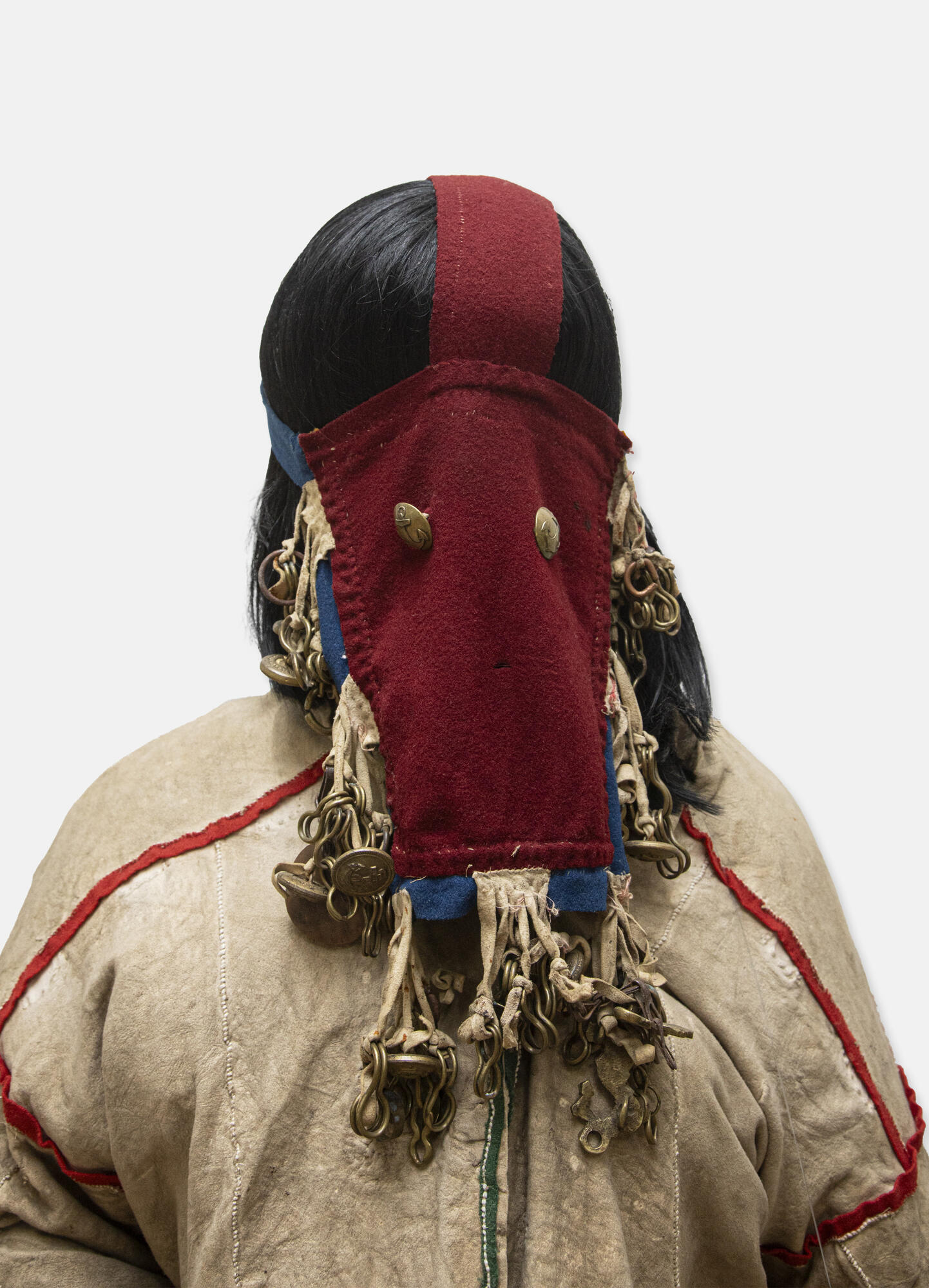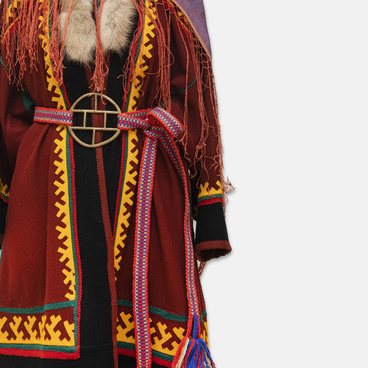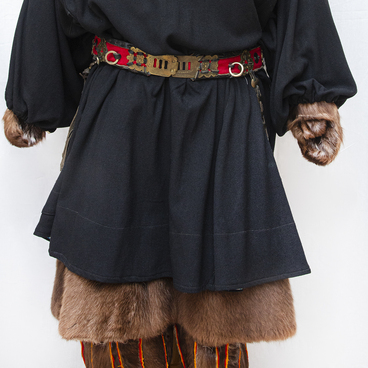In northern ethnic religions, a shaman is the main interactor between the world of people and spirits. Through ritual drumming, singing, and dancing, a shaman is able to contact the deities and communicate to them the requests made by people. The word “shaman” literally means “the one who knows”. The Nenets call their shamans “tadibey”. This term originates from the word “tadebtes” meaning “to put on a spell, to bewitch, or to conjure”. Shamans participated in all important rituals, including sacrificial offerings, festivities, rites of passage, and funerals.
Each element of the shaman’s costume had a special sacral meaning and strengthened the shaman’s connection with the invisible worlds. The most important element was the headdress: a tadibey had to answer to the spirits with his head for the loss of the mask hat.
The shamans from the European tundra had all sorts of headdresses. The design depended on the shaman’s status, power, and ability to contact the spirits of the Lower or Upper World. The most common headdress mentioned in written sources is the special “sevbabts” mask. It is a rectangular piece of cloth with buttons or pearl eyes sewn onto it. The mask was fastened with a strip of cloth around the head and two crossed ribbons at the top.
Along the perimeter, the mask was decorated with white stripes sewn with deer tendon threads. The decorated part was not on the outside surface of the mask but on the one directed towards the face. Such a mask was also equipped with many metal pendants and buttons on the fringes. This indicated the unique status of the shaman, and the jingling of metal parts was considered a sacred, pure sound that drove away evil spirits.
The mask expressed the shaman’s inner potential and demonstrated unity with the spiritual dimension. By putting on a mask, a shaman renounced his usual state and appearance and began a journey into other worlds. The drum served as a metaphorical heavenly horse or reindeer that helped the shaman address various deities depending on the rhythm and tone of striking the drum.
Nenets shamans wore simple and minimalistic
clothing. It could include a shirt and a suede robe, modestly decorated with
strips of colored cloth. Some shamans wore only a headband and a mask. The
minimalistic ritual clothing in some peoples is a late phenomenon, associated
with the decline and decay of shamanism.





